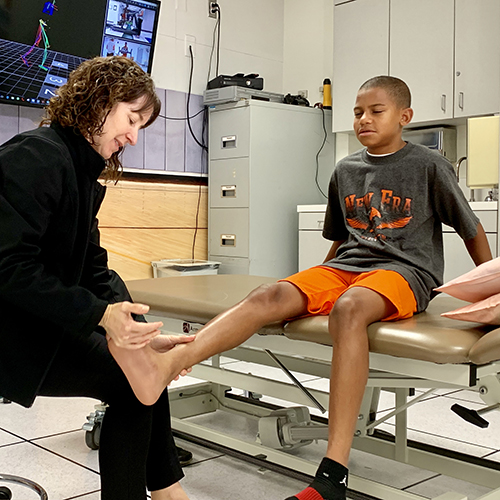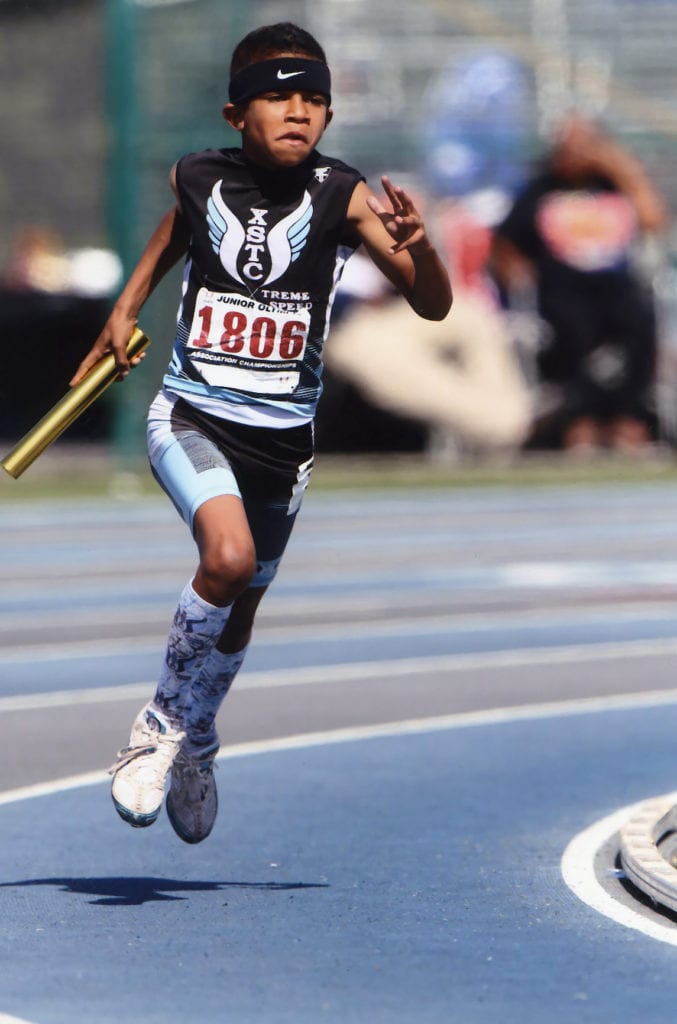
Eleven-year-old Gus Armstrong has been an athlete since before he was born. “[When I was pregnant] I remember distinctly sitting in a business meeting and people started laughing because my belly started running,” says his mom, Roslyn Simpson, who ran track at USC.
Gus started playing basketball and baseball at age 5, and now plays football and runs track. He competed in the 2019 National Junior Olympic Championships July 22-28 in Sacramento, hosted by USA Track & Field, the organization that chooses the U.S. Olympic teams.
But like many serious young athletes, Gus has struggled with overuse injury. After he injured his ankle during track practice at age 7, Simpson made an appointment with Tracy Zaslow, M.D., sports medicine director at Children’s Hospital Los Angeles.
Zaslow sees many young athletes with extreme training regimens, among them a 12-year-old gymnast. “She is training about 23 or 24 hours per week, as is required by her gym and she thinks is normal,” Zaslow says. But young athletes should be training only as many hours per week as they are years old. Exceeding that exposes kids to the possibility of stress fractures and growth plate, muscle, tendon, soft tissue and nerve damage.
In addition to keeping training time within reasonable limits, experts recommend “sports diversity” for all young athletes. “The classic patient that comes in with an overuse injury is a patient who is playing a single sport and playing that single sport for many hours,” explains Zaslow. Changing sports from season to season, athletes are exposed to multiple movement patterns and strengthen multiple areas of the body.

For best effect, choose sports with care. “Be thoughtful about what parts of the body are used and how you’re using them,” Zaslow says. “Volleyball and tennis are going to be very much overlapping versus volleyball and track or volleyball and swimming.” Playing soccer might even help an ice skater with footwork, and some time on the volleyball court could improve a soccer player’s ability to jump for a header.
Also key to keeping young athletes healthy is rest – a solid eight hours per night and scheduled rest days, or even rest weeks so the body can recover.
Sometimes, mechanics are the issue. After three years of repeated ankle injury, Gus visited Zaslow in CHLA’s Motion and Sports Analysis Laboratory to identify problems with his gait. Corrective exercises have helped him strengthen the area and stay uninjured since. “Since then, he’s gotten stronger and stronger,” says Simpson. “He’s running faster times, actually.”
If you’ve got a young athlete at home, follow sports diversity and rest guidelines and watch for signs your child is overdoing it – including recurring injury, pain and reduced performance. “If you notice things, get it handled,” advises Simpson. “See what’s happening and then get an expert and get an assessment, especially if this is something you know your child loves.”
After years of heel pain, Gus is back on the track – and his mom can see that he’s now less tense on the track. “Before, it looked like he was fighting, face all scrunched. Now, his face is more relaxed when he’s running,” she says.

























